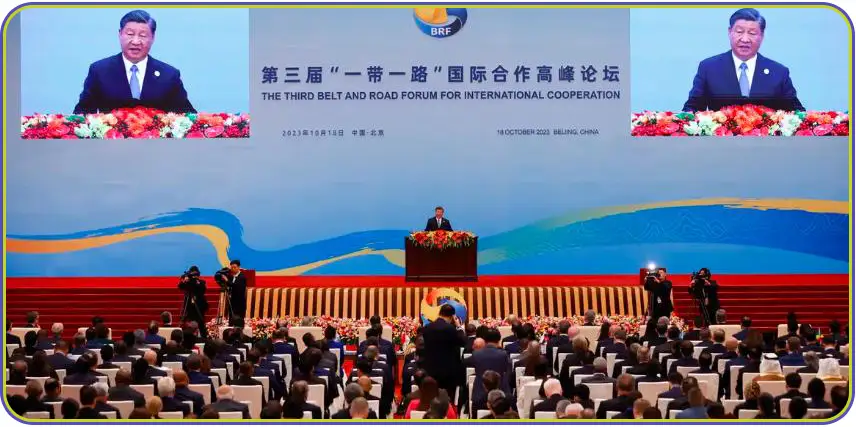In an unprecedented shift in global finance, China’s Debt Collection in World Wide. The colossal Belt and Road Initiative (BRI) is the centerpiece of President Xi Jinping’s foreign policy, with over 21,000 infrastructure projects under its umbrella. The scale of China’s financial influence surpasses that of the US Marshal Plan post World War II, with more than $1.3 trillion extended in loans over the past decade.
The Belt and Road Initiative: Reviving the Ancient Silk Route
The BRI has revitalized the historic Silk Route, fostering trade ties between China and other nations. However, critics argue that the BRI has burdened less developed countries with hefty debts and left a considerable carbon footprint in an era of climate change awareness.
China’s Influence Through Infrastructure Projects
China’s method of offering infrastructure contracts to countries, compelling them to use Chinese firms, has raised concerns about increasing indebtedness. With China ramping up its investment in large-scale projects, the bill for the past decade’s loans is now due, intensifying the problem. China’s Debt Collection
The AidData Findings: A Closer Look
AidData’s research reveals that 80% of the countries receiving loans from China are grappling with economic contraction. Furthermore, outstanding debt, excluding taxes, amounts to a staggering $1.1 trillion, with a significant number of BRI projects at risk or already failed.

The Burden of Repayment and Rising Interest Rates
The report also highlights the escalating repayment burdens for debtor nations as global interest rates surge. Over half of BRI loans have entered the principal repayment phase, with China imposing higher interest rates for late payments.
The US and G7 Response to China’s Initiative
In response to the BRI, the G7 countries launched the Build Back Better World (B3W) initiative, with the European Union unveiling its Global Gateway program. These initiatives aim to counterbalance China’s influence in the Global South and maintain Europe’s global standing.
The EU’s Global Gateway Program
Negotiations across Europe, Asia, and Africa have led to deals worth €70 billion, with potential support reaching up to €300 billion. These funds are expected to bolster projects related to vital raw minerals, green energy, and transport corridors.
The Shift in Global Finance: G7 Nations Outpace BRI
The AidData report shows that in 2021, G7 nations surpassed BRI by granting loans worth $84 billion. Despite this, the US and its allies struggle to match Beijing’s dollar-for-dollar approach. The report advises against trying to compete directly with China’s BRI as Beijing transitions from large-scale construction to debt collection.
The Future of BRI-Debted Countries
Finally, there is speculation about BRI-debted countries like Sri Lanka returning to the Western sphere of influence. However, these are predictions, and only time will tell how these financial dynamics will unfold.
Stay Connected With Wali Real Estate For More Updates






